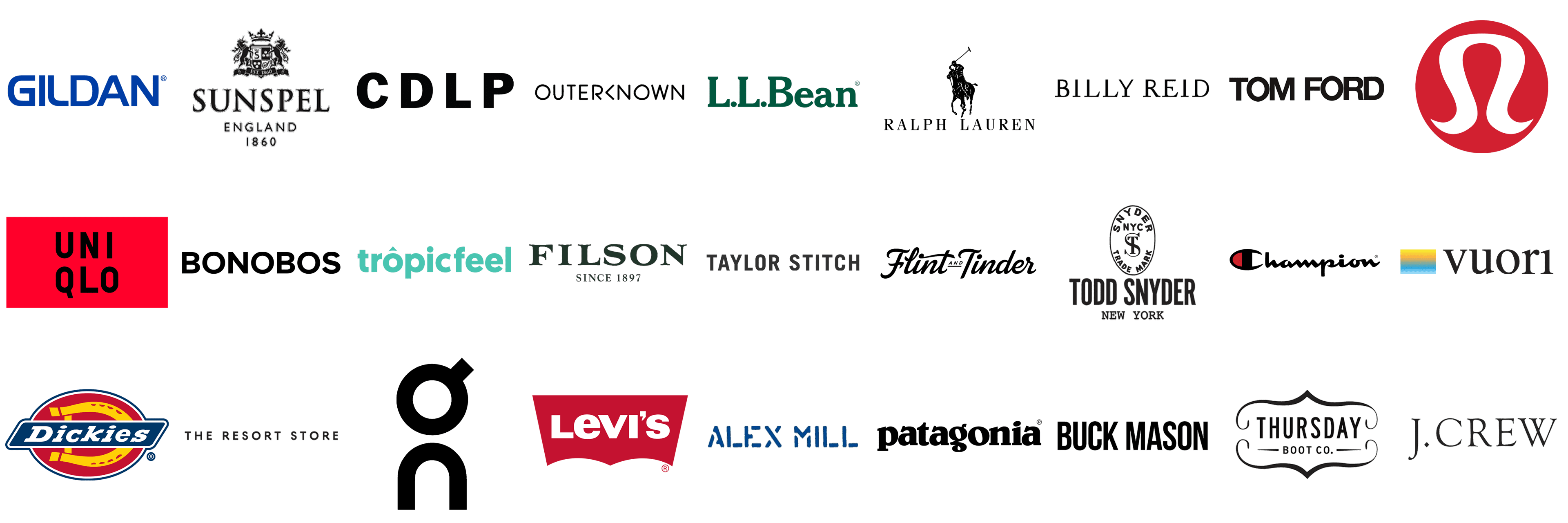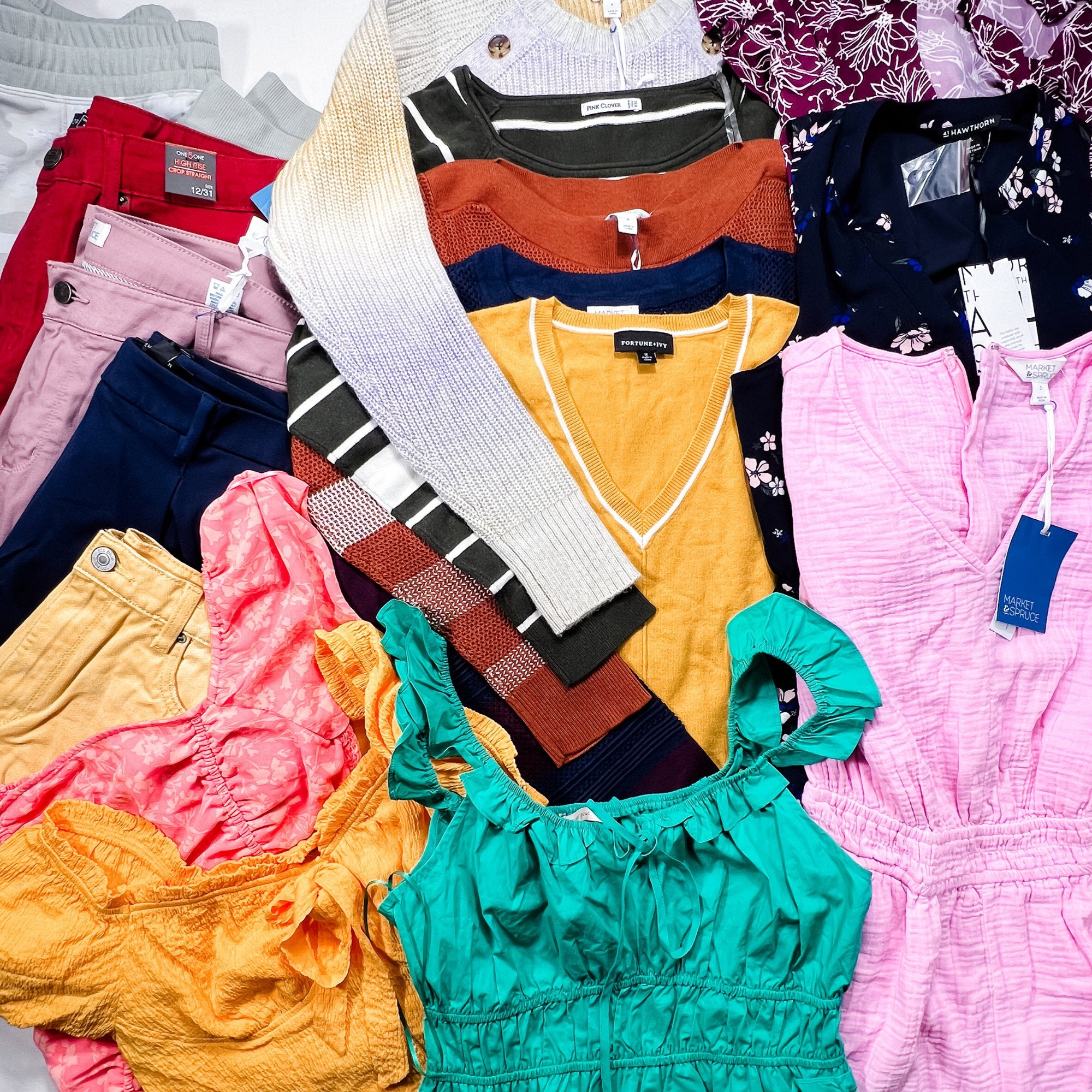Branded Clothing for Travel: Wrinkle-Resistant Fabrics That Perform
Branded Clothing for Travel: Wrinkle-Resistant Fabrics That Perform
Blog Article
The Relevance of Lasting Clothing: Exactly How It Impacts the Setting and Your Closet
Lasting apparel is increasingly identified for its crucial function in minimizing the ecological influence of the rapid apparel industry. By concentrating on eco-friendly products and moral production approaches, it deals with pressing environmental concerns. This shift not just profits the world but likewise influences consumer selections, resulting in a more thoughtful approach to wardrobe administration. Recognizing these dynamics raises important questions regarding fashion's future and personal obligation fit it.
The Ecological Impact of Fast Fashion

Benefits of Lasting Materials
Lasting materials supply substantial benefits, especially through green material choices that reduce environmental harm. These products also show longevity and longevity, reducing the requirement for frequent substitutes. Because of this, they add to a much more lasting style industry and promote responsible consumer habits.
Eco-Friendly Fabric Choices
While the garment industry has long been connected with rapid fads and ecological harm, the increase of eco-friendly textile options presents a transformative chance. Sustainable materials such as organic cotton, hemp, and Tencel have acquired appeal because of their reduced eco-friendly impact. These textiles are typically produced without dangerous chemicals and call for less water, lowering their carbon impact - Branded Clothing. In addition, several environmentally friendly materials are biodegradable, adding to a round economy by minimizing waste. Picking lasting materials not only supports eco accountable practices yet additionally advertises much healthier ecosystems. As customers become extra mindful of their acquiring power, the demand for environment-friendly textiles encourages brand names to introduce and embrace even more sustainable manufacturing methods, eventually profiting the earth and future generations
Resilience and Long Life Benefits
Numerous customers are increasingly recognizing the sturdiness and longevity advantages of sustainable materials in their clothes selections. Unlike standard materials, sustainable materials such as organic cotton, hemp, and recycled polyester are crafted to hold up against wear and tear, causing garments that last longer. This decreased regularity of replacement not just saves consumers money gradually but likewise decreases waste created by fast style. In enhancement, lasting clothes often utilizes environmentally friendly production techniques that improve fabric toughness, adding to a reduction in the general carbon impact. By buying resilient clothing, customers can grow an extra sustainable closet while taking pleasure in top quality pieces that maintain their visual and capability gradually. As a result, toughness and durability stand as essential advantages of choosing sustainable materials.
Minimizing Waste Through Sustainable Practices
Reducing waste in the garment industry can be accomplished with ingenious practices such as upcycling and repurposing materials. In addition, taking on minimalist wardrobe techniques motivates customers to prioritize top quality over quantity, eventually reducing clothing consumption. Together, these techniques add greatly to an extra sustainable clothes model.
Upcycling and Repurposing Products
Upcycling and repurposing products have become innovative techniques in the fashion sector, transforming thrown out fabrics right into important new products. This method not just decreases waste but also encourages imagination and individuality in clothing design. By taking old garments and products, designers can produce unique items that reflect individual style while lowering the need for new sources. Furthermore, upcycling usually needs less power and water compared to traditional manufacturing processes, considerably lowering the ecological impact of style. As customers come to be extra familiar with sustainability, the appeal of upcycled garments remains to climb, promoting a circular economy. Eventually, these methods contribute to a much more sustainable future, where style focuses on environmental health over fast production and consumption.

Minimalist Closet Techniques
As people increasingly look for to minimize their ecological influence, embracing minimal wardrobe approaches has actually acquired grip as an effective approach to lasting fashion. These techniques highlight high quality over amount, motivating consumers to curate a smaller sized collection of functional, durable apparel. By concentrating on timeless items that can be combined and matched, individuals can lower the frequency of purchases and ultimately lower waste.Additionally, minimalism advertises conscious usage, prompting consumers to mirror on the environmental and ethical ramifications of their selections. This strategy not only promotes a more sustainable way of living however additionally simplifies day-to-day decision-making regarding clothes. As individuals welcome minimal principles, they add to a style society that values sustainability and liable consumerism, eventually bring about an extra eco-conscious society.
The Role of Ethical Labor in Lasting Style
While lots of customers are progressively knowledgeable about the environmental consequences of their apparel selections, the relevance of honest labor techniques in sustainable fashion can not be forgotten. Honest labor encompasses fair incomes, secure working conditions, and respect for employees' civil liberties, developing the backbone of liable fashion manufacturing. Brand names that prioritize honest labor not only uplift neighborhoods yet also established a requirement for responsibility in the industry.Moreover, the assimilation of moral methods cultivates transparency, enabling consumers to make informed options regarding their acquisitions. This technique contrasts sharply with rapid fashion's unscrupulous labor designs, which usually focus on profit over individuals. By sustaining firms dedicated to honest labor, customers contribute to a system that values human dignity he has a good point along with environmental sustainability. As a result, moral labor is not merely an add-on; it is important to the more comprehensive mission of sustainable fashion, guaranteeing that the pursuit for eco-friendliness does not come at the expense of human legal rights.
The Effect of Sustainable Clothes on Carbon Emissions
Lasting apparel has the possible to substantially minimize carbon discharges associated with the garment industry. Typical garment production contributes significantly to greenhouse gas discharges, largely because of energy-intensive manufacturing processes and using non-renewable browse around this site sources. In comparison, lasting fashion concentrates on environmentally friendly products, such as natural cotton or recycled fibers, which often call for less energy to produce.Moreover, sustainable brands tend to adopt much more reliable production techniques, reducing waste and reducing overall discharges. By focusing on durability and timeless style, lasting apparel motivates consumers to acquire much less frequently, further decreasing the carbon footprint related to overconsumption.Additionally, many sustainable brand names are committed to openness in their supply chains, enabling consumers to make informed options that straighten with their worths. Ultimately, shifting towards lasting clothing can cause a substantial reduction in carbon discharges, adding to a healthier world and a much more lasting future for the fashion business.
Sustaining Local Economic Climates With Lasting Options
The shift toward lasting apparel not only addresses environmental issues however additionally substantially benefits neighborhood economies. By selecting lasting fashion, customers often support little services and local craftsmens, enhancing community resilience. These business usually run on a smaller scale, prioritizing craftsmanship and moral techniques over mass production.Investing in locally made sustainable garments promotes work development and boosts financial development within neighborhoods. As consumers end up being a lot more familiar with the ecological impact of their purchases, they progressively seek out products that reflect their worths. This demand motivates regional makers to embrace sustainable techniques, adding to a circular economy.Moreover, sustaining local businesses lowers transportation emissions, Continued lining up with eco-conscious customer behavior. The interconnectedness of lasting apparel and local economic climates highlights the crucial function that private options play in advertising both environmental and economic health. By promoting these regional links, areas can grow while also functioning in the direction of a much more sustainable future.
Transforming Your Wardrobe: Tips for a Sustainable Wardrobe
As people look for to decrease their environmental influence, transforming a closet right into a sustainable wardrobe becomes an important step. One effective approach is to review existing garments, keeping only products that are used consistently which line up with sustainability goals. Focusing on high quality over quantity is crucial; spending in resilient items from environment-friendly brands can significantly lower waste.Additionally, integrating pre-owned items can revive a wardrobe while lessening environmental damage. Organizing apparel swaps with buddies or contributing extra things can better promote sustainability.When buying, people must seek products that are natural, recycled, or eco-friendly, and prevent fast fashion merchants - Branded Clothing. Practicing mindful intake by attentively taking into consideration each purchase can add to a much more sustainable way of life. By executing these tips, one can create a closet that mirrors personal design while sustaining ecological stewardship
Regularly Asked Questions
Exactly How Can I Determine Lasting Apparel Brands?
To identify sustainable garments brand names, one need to research products utilized, look for qualifications like Fair Profession, and take a look at the brand's transparency concerning their production procedures, labor practices, and environmental impact, making sure ethical and environmentally friendly techniques are prioritized.
What Are the Expenses Connected With Lasting Style?
The prices linked with lasting fashion can vary significantly. Greater manufacturing costs, ethical sourcing, and environment-friendly materials usually result in enhanced market prices, which may discourage some consumers while interesting ecologically conscious customers.
Can Sustainable Apparel Be Trendy and fashionable?
Sustainable clothing can undoubtedly be stylish and stylish. Developers increasingly prioritize innovative products and moral manufacturing methods, showing that style and sustainability can exist side-by-side. Consumers currently have varied alternatives that blend appearances with ecological awareness.
Exactly How Does Laundering Clothing Affect Their Sustainability?
Washing garments greatly influences sustainability by consuming water and power, adding to pollution, and causing microplastic release. Constant washing can degrade materials, shortening their life expectancy and increasing the need for replacements, inevitably exacerbating environmental problems.
What Is the Life-span of Lasting Clothes Contrasted to Fast Fashion?
The life-span of sustainable clothing usually surpasses that of quick fashion products, commonly long-term a number of years as a result of high quality materials and craftsmanship. On the other hand, rapid style garments may weaken promptly, requiring even more frequent replacements. Sustainable clothing is increasingly acknowledged for its crucial duty in lessening the environmental impact of the fast style market. While numerous consumers are increasingly aware of the ecological consequences of their clothes selections, the relevance of honest labor techniques in sustainable style can not be neglected. Branded Clothing. Lasting garments has the potential to considerably minimize carbon emissions linked with the style market. In contrast, lasting style focuses on eco-friendly products, such as natural cotton or recycled fibers, which usually need less power to produce.Moreover, sustainable brand names often tend to take on much more efficient production practices, decreasing waste and reducing total discharges. By prioritizing toughness and timeless layout, sustainable garments encourages customers to buy less regularly, additional lowering the carbon footprint linked with overconsumption.Additionally, numerous lasting brand names are committed to openness in their supply chains, enabling consumers to make enlightened choices that line up with their worths
Report this page